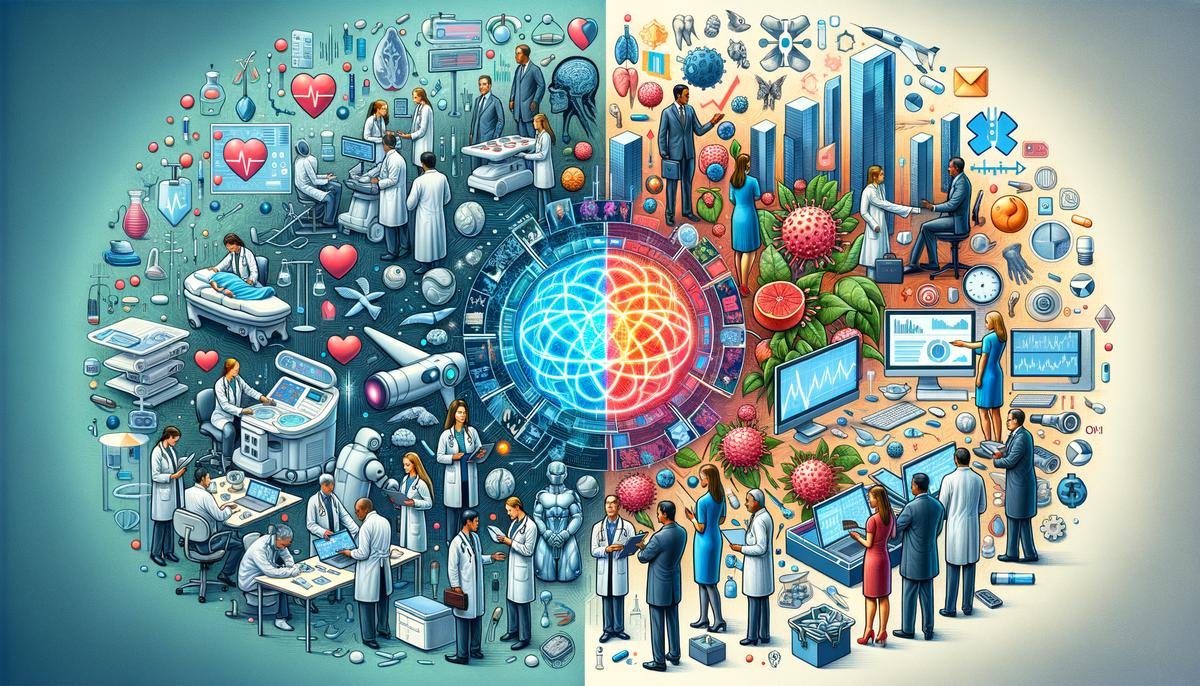AI in Government and Public Sector
AI is making significant strides in the government and public sector. In social welfare, AI analyzes large datasets to identify fraudulent benefits claims, helping to mitigate losses from payment card fraud. In transportation, AI-guided cars are becoming feasible in predictable environments, particularly for last-mile deliveries in cities and suburbs. These vehicles optimize routes, reduce delivery times, and increase efficiency, leading to fewer traffic jams and lower pollution.
Administrative work in the public sector also benefits from AI. Computer vision and machine learning models streamline paperwork tasks by extracting data from various documents, easing the administrative burden. In manufacturing and construction, AI enhances Building Information Modeling (BIM) by analyzing data to:
- Optimize construction schedules
- Predict issues
- Suggest efficient building methods
Predictive maintenance leverages AI to forecast equipment failures, allowing for preemptive repairs and maintenance. Generative design enables manufacturers to evaluate and choose the best design options swiftly. The adoption of AI-driven tools and techniques in these sectors is setting the stage for continued advancements, signifying a shift in operational methodologies and output capacities.

AI in Healthcare and Finance
AI is revolutionizing healthcare by improving diagnostic accuracy and patient outcomes. Machine learning models can analyze medical images more quickly and accurately than traditional methods, often detecting anomalies at their earliest stages. AI also streamlines administrative tasks, such as scheduling appointments and managing patient records, allowing healthcare professionals to focus on patient care. Chatbots assist patients by providing answers to common queries and guiding them through appointment booking.
Predictive analytics in healthcare anticipates patient needs and optimizes resource allocation. AI can identify patients at high risk for certain conditions, enabling early intervention and preventive care. It can also forecast the spread of infectious diseases, aiding in proactive response planning.
In finance, AI plays a pivotal role in financial forecasting and fraud detection. Predictive analytics models examine market trends, historical data, and economic indicators, enabling firms to make informed investment decisions and manage risks effectively. AI tools also help financial planners and analysts predict market movements, assess credit risks, and personalize customer financial advice.
AI excels in fraud detection by analyzing transaction patterns and anomalies in real time, flagging potential fraud swiftly. Machine learning models continuously monitor financial transactions, adapting to evolving threats. AI also empowers organizations to scrutinize large volumes of transactions quickly in anti-money laundering efforts.
Robotic process automation (RPA) automates repetitive tasks in finance, such as data entry and compliance checks, increasing efficiency and reducing human error. This allows finance professionals to focus on more complex, strategic tasks.

AI in Transportation and Home Services
AI is enhancing vehicle safety and efficiency in transportation. Driver assistance systems, such as adaptive cruise control and automated emergency braking, rely on machine learning models and sensor data to make split-second decisions, reducing human error and improving road safety. Predictive maintenance for fleet management analyzes vehicle sensor data to forecast when parts are likely to fail, minimizing downtime and preventing unexpected breakdowns.
Route optimization powered by AI benefits logistics and delivery services by analyzing traffic patterns, weather conditions, and historical data to determine the most efficient routes. This leads to reduced fuel consumption, shorter delivery times, and decreased traffic congestion.
In the home services sector, AI is transforming service quality and operational efficiency. Plumbers, electricians, and HVAC technicians use AI-powered diagnostic tools to streamline the identification and repair of issues. These tools utilize machine learning to assess symptoms and predict the most probable causes of malfunctions, leading to faster and more accurate diagnoses.
Augmented reality (AR) is another innovative use of AI in home services. Technicians can receive real-time guidance for repairs through AR glasses or mobile devices, with AI overlays displaying step-by-step instructions and identifying components.
AI also plays a significant role in home automation and smart home systems. Sophisticated algorithms enable smart thermostats, lighting, and security systems to learn user preferences and habits, optimizing energy use and enhancing convenience. AI-driven customer relationship management (CRM) analyzes customer data to create detailed profiles and predict service needs based on past behavior and usage patterns.
Challenges and Considerations in AI Implementation
Implementing AI in traditional industries comes with inherent challenges and considerations. One primary challenge is establishing a robust data infrastructure. Upgrading data infrastructure to support AI initiatives involves substantial investment in hardware, software, and ongoing maintenance. Ensuring data quality and consistency is crucial for AI algorithms to function optimally.
Ethical implications of AI implementation, such as the potential for bias in decision-making, present another complex challenge. To mitigate this, it's essential to adopt ethical AI frameworks that emphasize transparency, accountability, and fairness. Developers and stakeholders must work collaboratively to scrutinize and refine AI algorithms, ensuring they operate equitably across diverse demographics.
Privacy and security issues related to data collection and usage demand vigilant attention. Stringent data protection protocols, such as advanced encryption methods and anonymization techniques, can help safeguard individual privacy. Adhering to data governance regulations ensures compliance with legal standards and fosters public trust in AI technologies.
Ongoing learning and training are vital to successful AI integration. Traditional industries must cultivate a culture of continuous education to keep pace with rapid technological advancements. Training programs should focus on technical skills and developing an understanding of AI's limitations and ethical considerations.
Human-centered AI emphasizes the importance of balancing automated processes with human judgment and intuition. AI systems should be designed to augment human capabilities rather than replace them. By integrating human expertise with AI-driven insights, industries can achieve more informed and nuanced outcomes.
Policy frameworks play a critical role in guiding the ethical implementation of AI. Governments and regulatory bodies must collaborate with industry leaders, academics, and civil society to develop comprehensive policies that address the multifaceted challenges of AI. These policies should promote inclusivity and ensure that the benefits of AI are equitably distributed across society.
- Davenport T, Kalakota R. The potential for artificial intelligence in healthcare. Future Healthc J. 2019;6(2):94-98.
- Chen M, Decary M. Artificial intelligence in healthcare: An essential guide for health leaders. Healthc Manage Forum. 2020;33(1):10-18.
- Petropoulos G. The impact of artificial intelligence on employment. In: Neufeind M, O'Reilly J, Ranft F, eds. Work in the Digital Age. Rowman & Littlefield; 2018:119-132.



